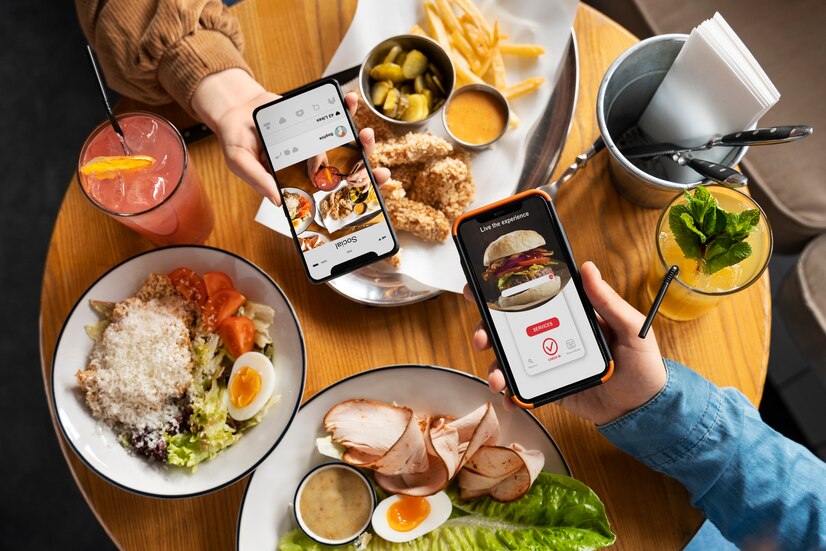Online reviews can make or break your restaurant or bar. Before making a decision about where to eat or drink, most people turn to Google, Yelp, or other review platforms to see what others have said. Positive reviews can drive more foot traffic, boost reservations, and help you stand out from the competition. On the flip side, negative reviews—especially if unaddressed—can tarnish your reputation and cost you potential customers.
The good news is that you don’t have to leave your online reputation to chance. With a few strategic actions, you can encourage more positive reviews and improve the overall sentiment surrounding your business. Here’s how to get more—and better—online reviews for your bar or restaurant.
1. Deliver Outstanding Customer Service
It might sound obvious, but the foundation of getting great reviews is providing an exceptional experience. If customers enjoy their time with you, they’re much more likely to leave a positive review.
- Friendly, Engaged Staff: From the host greeting them at the door to the server checking in during the meal, a positive interaction with staff can leave a lasting impression. When customers feel welcomed, valued, and well taken care of, they are more inclined to share their experience online.
- Consistency: Ensure that the quality of your food, drinks, and service is consistent. A guest who enjoys a delicious meal and great service on their first visit will expect the same when they return. Consistency builds trust, and trust leads to positive reviews.
- Go the Extra Mile: Small gestures, like remembering a regular customer’s drink order or offering a complimentary dessert for a special occasion, can make all the difference. Customers appreciate being treated like individuals, and this type of personalized service can inspire rave reviews.
2. Ask for Reviews at the Right Time
The key to getting reviews is timing. When customers are happy, they’re much more likely to share their experience. So, timing your request at the right moment can increase your chances of getting a glowing review.
- After a Positive Experience: The best time to ask for a review is when customers are already feeling good about their experience. If a guest compliments the food or service, take that as a cue to kindly ask, “We’re so glad you enjoyed your meal! If you have a moment, we’d love to hear your thoughts on Google or Yelp.”
- During the Check-Out Process: If you’re running a bar, this is a great time to ask. When customers are paying their bill, they’re often in a good mood and receptive to feedback. You can add a simple note to the receipt, like “If you loved your experience today, please leave us a review on [platform].”
3. Make It Easy for Customers to Leave Reviews
The easier you make it for customers to leave reviews, the more likely they are to do it. Customers are busy, and if it takes too much time or effort, they might skip it altogether.
- Provide Direct Links: Send a follow-up email after a visit or include a link on your website that leads directly to your review pages. A simple “Click here to leave a review” with a link to your Google My Business or Yelp page makes the process seamless.
- QR Codes: You can display QR codes on receipts, menus, or table tents that lead directly to your review sites. When customers scan the code with their phones, they’ll be taken straight to the page where they can leave feedback.
- Simplify the Process: Keep the review process as straightforward as possible. Make sure your website and online ordering platforms are user-friendly, and that review links are easy to find.
4. Incentivize Reviews Without “Buying” Them
While offering discounts or rewards in exchange for positive reviews is not only unethical but also against the rules on most review platforms, you can encourage customers to share their honest feedback by incentivizing the process in a more ethical way.
- Thank You Notes or Small Rewards: After a guest leaves a review, send them a thank-you message. You can even offer a small token of appreciation like a free dessert or a discount on their next visit. Make sure this is framed as a thank-you for their time—not for a positive review.
- Enter Customers Into Contests: Consider holding a monthly drawing for customers who leave reviews. For example, you could offer a chance to win a gift card, free dinner, or exclusive event tickets in exchange for writing a review. Keep it transparent and make it clear that customers are entering a contest for simply sharing their experience, not for writing a positive review.
5. Respond to Reviews—Both Positive and Negative
A key part of managing your online reputation is engaging with reviews. Responding to both positive and negative feedback shows that you value your customers’ opinions and are committed to continuous improvement.
- Thank Customers for Positive Reviews: When someone leaves a glowing review, take the time to thank them personally. A simple “Thank you for the kind words, [Name]! We’re so glad you enjoyed your meal, and we look forward to seeing you again soon!” can go a long way in building customer loyalty.
- Address Negative Reviews Professionally: Negative reviews are inevitable, but how you respond can make all the difference. Always respond professionally, apologize for the experience if necessary, and offer a solution. For example, “We’re so sorry to hear that your experience didn’t meet expectations. We take your feedback seriously, and we’d love to make things right. Please contact us at [contact info], and we’ll work to address your concerns.”
6. Leverage Social Media to Boost Reviews
Social media platforms are a great way to encourage customers to share their experiences online. Regularly post content that invites customers to leave reviews, and make sure your social media pages are linked to your review platforms.
- Share Positive Reviews: When you receive great reviews, share them on your social media accounts. This not only shows appreciation for the feedback but also encourages others to leave their own reviews.
- User-Generated Content: Encourage customers to share photos of their meals or drinks on Instagram, Facebook, or Twitter, tagging your bar or restaurant. Repost these images with proper credit, and remind your followers to leave a review if they had a good experience.
7. Track and Monitor Your Reviews
Once you start encouraging more reviews, it’s important to monitor them regularly. Use platforms like Google My Business, Yelp, or social media to keep track of feedback. Stay on top of new reviews and respond promptly.
- Use Review Monitoring Tools: Tools like ReviewTrackers, BirdEye, or Yext can help you monitor reviews across multiple platforms from one dashboard. These tools can also alert you when a new review is posted, allowing you to respond quickly.
- Analyze Review Trends: Pay attention to trends in the reviews. Are customers consistently praising a particular dish or aspect of your service? Or are there recurring complaints you need to address? Use these insights to continuously improve your operations.
Building a Positive Online Reputation Takes Effort, But It’s Worth It
Getting more and better reviews for your bar or restaurant isn’t a quick fix—it takes time, effort, and a commitment to delivering outstanding customer experiences. By consistently providing excellent service, making it easy for customers to leave feedback, and responding to both positive and negative reviews, you’ll be well on your way to building a strong online reputation.
If you’re ready to take your online reviews and reputation management to the next level, we can help. Contact us today to learn how our digital marketing services can support your restaurant or bar’s growth, helping you attract more customers and build lasting loyalty.


